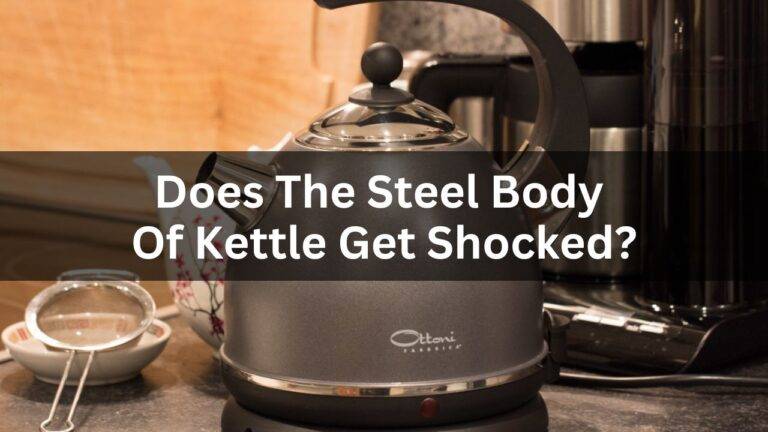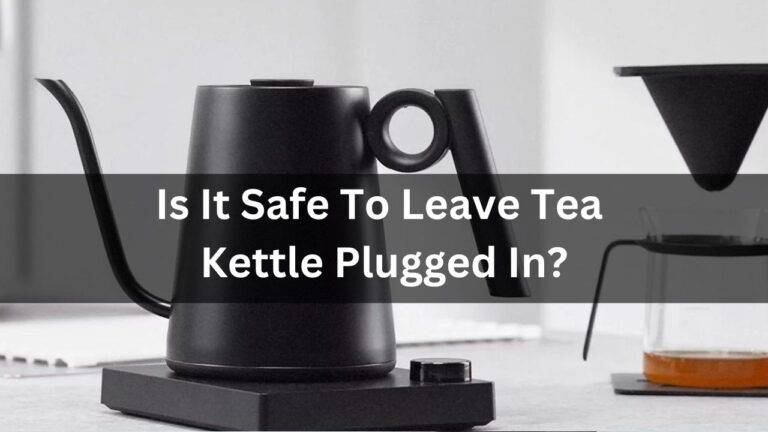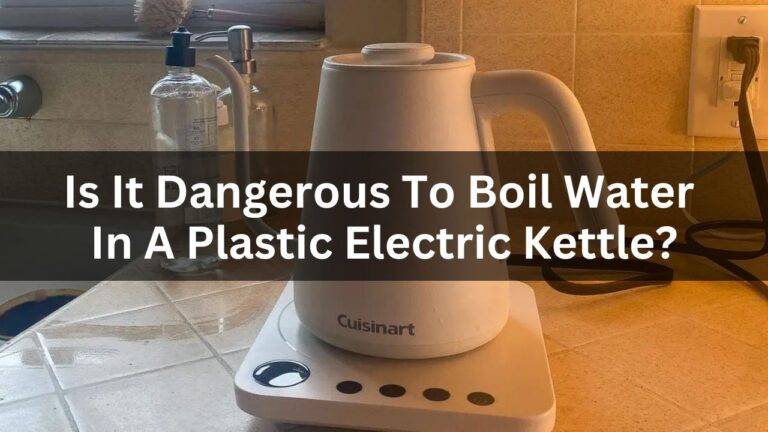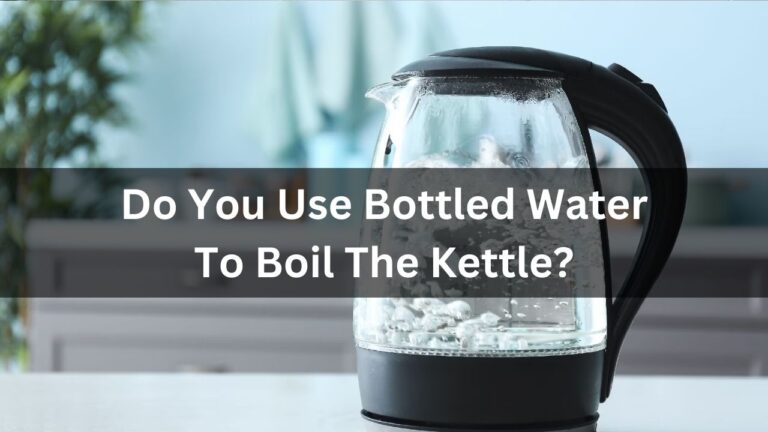Why Circuit Breaker Tripping When Using Kettle?
The most common reason for a circuit breaker to trip is overloading. The kettle itself may have an electrical fault, such as a short circuit or damaged wiring. The electrical wiring in the house may be old or damaged, leading to increased resistance and heat generation.A ground fault occurs when the hot wire comes into contact with a ground…
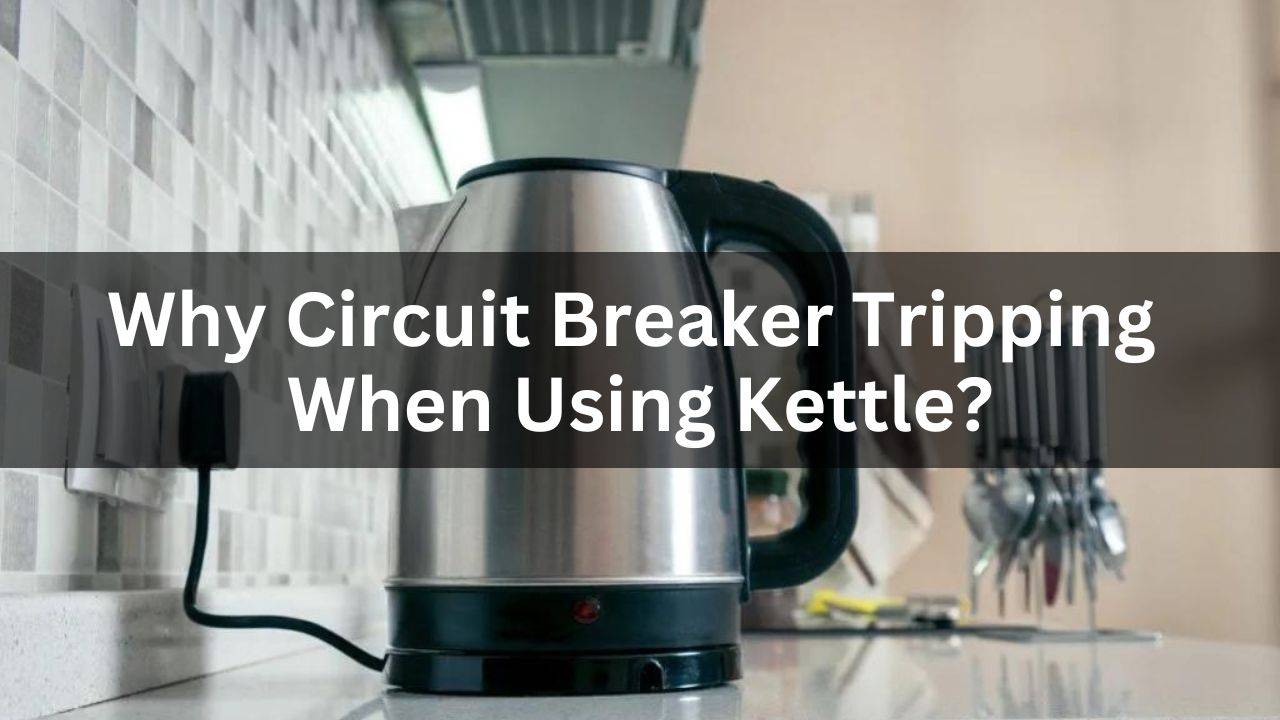
The most common reason for a circuit breaker to trip is overloading. The kettle itself may have an electrical fault, such as a short circuit or damaged wiring.
The electrical wiring in the house may be old or damaged, leading to increased resistance and heat generation.A ground fault occurs when the hot wire comes into contact with a ground source, such as the metal body of the kettle.
The circuit breaker itself may be faulty or damaged. Sudden voltage fluctuations or spikes in the electrical supply can cause the circuit breaker to trip.
If the wiring size is not suitable for the kettle’s power requirements, it can lead to increased resistance and cause the circuit breaker to trip.
Contents
- 1 7 Major Problems and Their Solutions:
- 1.1 1. Inadequate Wiring Size Leading to Circuit Breaker Tripping:
- 1.2 2. Voltage Fluctuations Causing Circuit Breaker Tripping:
- 1.3 3. Circuit Breaker Issues Leading to Tripping:
- 1.4 4. Ground Fault Causing Circuit Breaker Tripping:
- 1.5 5. Worn-out Wiring Causing Circuit Breaker Tripping:
- 1.6 6. Faulty Kettle Leading to Circuit Breaker Tripping:
- 1.7 7. Overloading the Circuit Causing Circuit Breaker Tripping:
- 2 Can using an extension cord with the kettle lead to circuit breaker tripping?
- 3 Is it safe to reset the circuit breaker every time it trips while using the kettle?
- 4 Why does the circuit breaker only trip when I use the kettle and not other appliances?
- 5 Final Words:
- 6 FAQs
7 Major Problems and Their Solutions:
1. Inadequate Wiring Size Leading to Circuit Breaker Tripping:
Issue: Wiring size is not suitable for the kettle’s power requirements.
Symptoms: Increased resistance, circuit overload, and circuit breaker tripping.
Solution:
- Ensure the wiring is appropriate for the kettle’s power consumption.
- Seek advice from a licensed electrician if wiring needs to be upgraded.
- Don’t connect high-power devices to circuits with inadequate wiring.[1]
2. Voltage Fluctuations Causing Circuit Breaker Tripping:
Issue: Sudden voltage fluctuations or spikes in the electrical supply.
Symptoms: Circuit breaker tripping unexpectedly during kettle use.[2]
Solution:
- Use a surge protector or voltage stabilizer for the kettle.
- Ensure stable and consistent electrical supply.
- Consult an electrician to evaluate and address voltage irregularities.
3. Circuit Breaker Issues Leading to Tripping:
Issue: Faulty or damaged circuit breaker causing premature tripping.[3]
Symptoms: Circuit breaker trips even when the load is within capacity.
Solution:
Professional Inspection: Have a qualified electrician inspect the circuit breaker.
Testing: Perform tests to identify faulty components or irregularities.
Replace or Repair: Replace or repair the circuit breaker as recommended by the electrician.
4. Ground Fault Causing Circuit Breaker Tripping:
Issue: Hot wire coming into contact with a ground source, leading to a short circuit.[4]
Symptoms: Circuit breaker trips due to a potential ground fault, often accompanied by sparks or unusual sounds.
Solution:
- Check the kettle for exposed wires, damaged plugs, or signs of wear.
- If damage is found, replace the damaged components immediately.
- Consider using appliances with built-in ground fault protection.
- If issues persist, consult an electrician for a thorough inspection.
5. Worn-out Wiring Causing Circuit Breaker Tripping:
Issue: Old or damaged wiring leading to increased resistance and heat generation.[5]
Symptoms: Circuit breaker trips due to the elevated resistance in the electrical circuit.
Solution:
- Hire a qualified electrician to inspect the wiring thoroughly.
- Replace any damaged or worn-out wiring identified during inspection.
- Consider upgrading old wiring to meet current safety standards.
- Ensure that the wiring can handle the electrical load.
6. Faulty Kettle Leading to Circuit Breaker Tripping:
Issue: The kettle itself has an electrical fault, such as a short circuit or damaged wiring.[6]
Symptoms: Sudden circuit breaker trips specifically when using the kettle.
Solution:
- Examine the kettle for visible signs of damage, exposed wires, or burnt areas.
- Test with a different kettle to determine if the issue persists.
- If the kettle is found to be faulty, consider repairing or replacing it.
7. Overloading the Circuit Causing Circuit Breaker Tripping:
Issue: The circuit is overloaded due to the simultaneous use of high-power devices.[7]
Symptoms: Circuit breaker trips when multiple high-power appliances, including the kettle, are in use.
Solution:
- Avoid operating high-power devices on the same circuit simultaneously.
- Connect the kettle to a dedicated circuit if possible.
- Disconnect or turn off other appliances when using the kettle.
Also Read: Is It Dangerous To Boil Water In A Plastic Electric Kettle?
Can using an extension cord with the kettle lead to circuit breaker tripping?
Yes, using an extension cord with the kettle can indeed lead to circuit breaker tripping. Extension cords introduce additional length to the electrical circuit, causing an increase in resistance.
This heightened resistance can result in voltage drops, particularly if the extension cord lacks the appropriate gauge for the power requirements of the kettle.
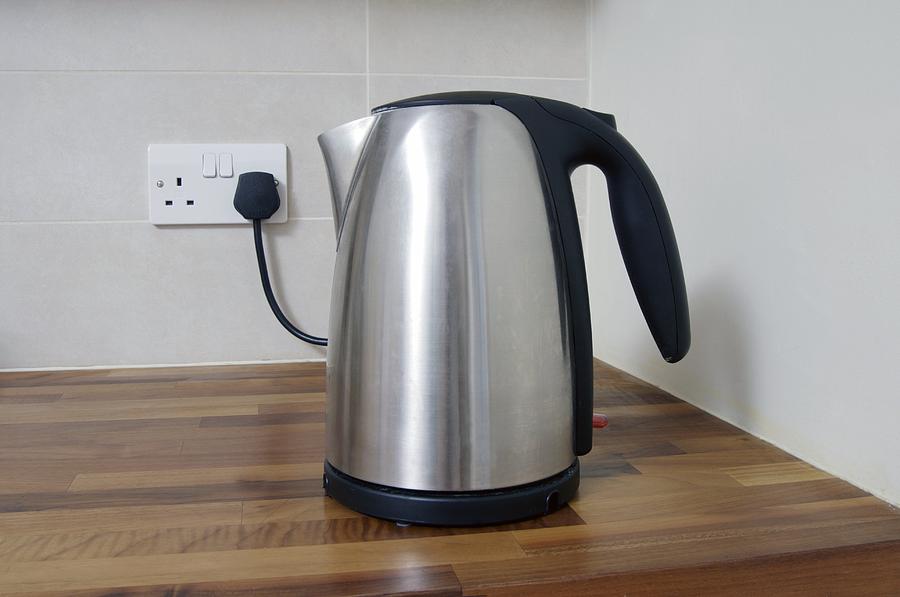
Furthermore, if the extension cord is shared with other high-power devices or is not rated to handle the wattage of the kettle, it may contribute to overloading the circuit.
Overloading occurs when the combined power demand surpasses the capacity of the circuit, prompting the circuit breaker to trip as a safety measure to prevent overheating and potential fire hazards.[8]
Is it safe to reset the circuit breaker every time it trips while using the kettle?
- Not Recommended: Resetting the circuit breaker every time it trips while using the kettle is not a safe or long-term solution.
- Indication of Issue: Tripping indicates an underlying problem in the electrical circuit or with the kettle.
- Temporary Fix: Resetting restores power temporarily, but the issue may persist, leading to repeated tripping.
- Potential Hazards: Continuing to reset without addressing the root cause can result in overheating, electrical fires, or damage to components.
- Investigate and Resolve: Identify and fix the reason behind the tripping, such as overloading, faulty wiring, or a defective kettle.
- Consult a Professional: If unsure, seek the assistance of a qualified electrician for a thorough inspection and proper resolution.[9]
Also Read:How Do You Prevent Kettle From Temperature Swings?
Why does the circuit breaker only trip when I use the kettle and not other appliances?
The circuit breaker tripping specifically when using the kettle, and not with other appliances, could be attributed to several factors:
Power Demand:
The kettle may have a high power demand, and when it is turned on, it draws a significant amount of current. If the combined power usage of other appliances on the same circuit is close to the circuit’s capacity, adding the high-power kettle can push it over the limit, causing the circuit breaker to trip.
Circuit Overloading:
The electrical circuit may be shared with other high-power devices, and the collective load when using the kettle might exceed the circuit’s capacity. This can lead to overloading and trigger the circuit breaker.
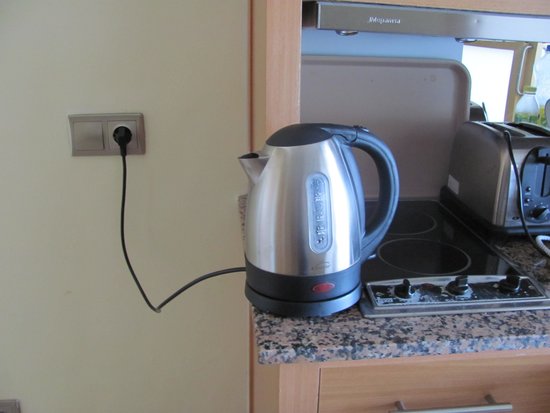
Faulty Kettle:
The kettle itself may have an electrical fault, such as a short circuit or damaged wiring. This fault becomes apparent only when the kettle is in use, leading to a sudden surge in current and tripping the circuit breaker.
Wiring Issues:
There could be issues with the wiring specific to the circuit where the kettle is connected. This might include inadequate wiring size, wear and tear, or other faults that become more pronounced when the kettle is operational.[10]
Also Read: Is It Safe To Leave Tea Kettle Plugged In?
Final Words:
In conclusion, understanding why your circuit breaker trips exclusively when using the kettle involves a careful examination of various factors.
Whether it’s the high power demand of the kettle, circuit overloading due to shared usage, a faulty appliance, or wiring issues, pinpointing the exact cause is crucial for a safe and efficient electrical system.
By implementing practical solutions such as redistributing loads, inspecting appliances, and ensuring proper wiring, you can address the root of the problem.
Remember, prioritizing electrical safety and seeking professional assistance when needed are key to maintaining a reliable and hazard-free home electrical setup.
Unraveling the mystery of selective tripping empowers you to create a more resilient and responsive electrical environment in your home.
FAQs
Q: How can I prevent the circuit breaker from tripping when using the kettle?
A: Use a dedicated electrical circuit for high-power appliances like kettles. Avoid connecting multiple devices to the same circuit. Ensure the kettle and its cord are in good condition, without any exposed wires or damage.
Q: Can a faulty kettle cause the circuit breaker to trip?
A: Yes, a faulty kettle with electrical issues, such as a short circuit or damaged cord, can lead to overloads and trip the circuit breaker.
Q: Is the circuit breaker tripping a common issue with kettles?
A: It can occur if electrical demands exceed the circuit’s capacity. Ensuring proper electrical setup and addressing any kettle issues promptly can prevent tripping.
Q: Should I reset the circuit breaker immediately if it trips while using the kettle?
A: Before resetting, identify and address the cause of the tripping, such as reducing electrical load. If the issue persists, consult an electrician to inspect the circuit and kettle for potential problems.
Q: Is using an extension cord with the kettle a potential cause of tripping the circuit breaker?
A: Yes, using an inadequate or damaged extension cord may increase electrical resistance and lead to circuit overload. Use a cord that meets the kettle’s power requirements.
Q: Does the circuit breaker tripping indicate a serious problem?
A: It’s a safety feature to prevent electrical fires. While occasional trips can be normal, frequent tripping suggests an issue that needs attention.
Q: Can using multiple appliances simultaneously contribute to the circuit breaker tripping?
A: Yes, simultaneous use of high-powered appliances on the same circuit can overload it, leading to a tripped breaker. Distribute appliance usage across different circuits.
Q: Is there a recommended circuit or power rating for using a kettle?
A: Follow the manufacturer’s specifications for the kettle’s power requirements, and ensure your electrical system can handle the load.
Q: What are the potential risks if I ignore frequent circuit breaker trips when using the kettle?
A: Ignoring frequent trips can lead to overheating, electrical fires, or damage to appliances. It’s crucial to address the issue promptly.
Q: Can I reset the circuit breaker myself after it trips, or should I seek professional help?
A: It’s generally safe to reset the breaker, but if the issue persists, consult a professional electrician to diagnose and resolve the underlying problem.
Q: Can using a kettle with a higher wattage than recommended lead to circuit breaker tripping?
A: Yes, using a kettle with a wattage exceeding the circuit’s capacity can cause overload, leading to the circuit breaker tripping as a safety measure.
Q: Are there specific safety measures I can take to prevent circuit breaker trips with my kettle?
A: Ensure the kettle is in good condition, avoid overloading circuits with multiple high-powered appliances, and use a dedicated outlet for the kettle to minimize tripping.
Q: Can environmental factors, like humidity or extreme temperatures, contribute to circuit breaker trips?
A: While rare, extreme environmental conditions may impact electrical systems. Ensure the kettle and its surroundings are dry, and consult an electrician if issues persist.
Q: What are the common reasons for a circuit breaker to trip when using a kettle, and how can users identify and troubleshoot specific issues to prevent recurrent tripping?
A: Explore common causes of circuit breaker tripping with kettles and provide guidance for users to troubleshoot issues and prevent recurring tripping.
Q: Can the wattage or power rating of a kettle contribute to circuit breaker trips, and are there guidelines for users to ensure that the electrical load from the kettle aligns with the circuit’s capacity?
A: Discuss how the wattage or power rating of a kettle may contribute to circuit breaker trips and offer guidelines for users to align the electrical load with the circuit’s capacity.
Article you might be interested:
Can We Revisit Why Aluminum Kettles Are Bad?

